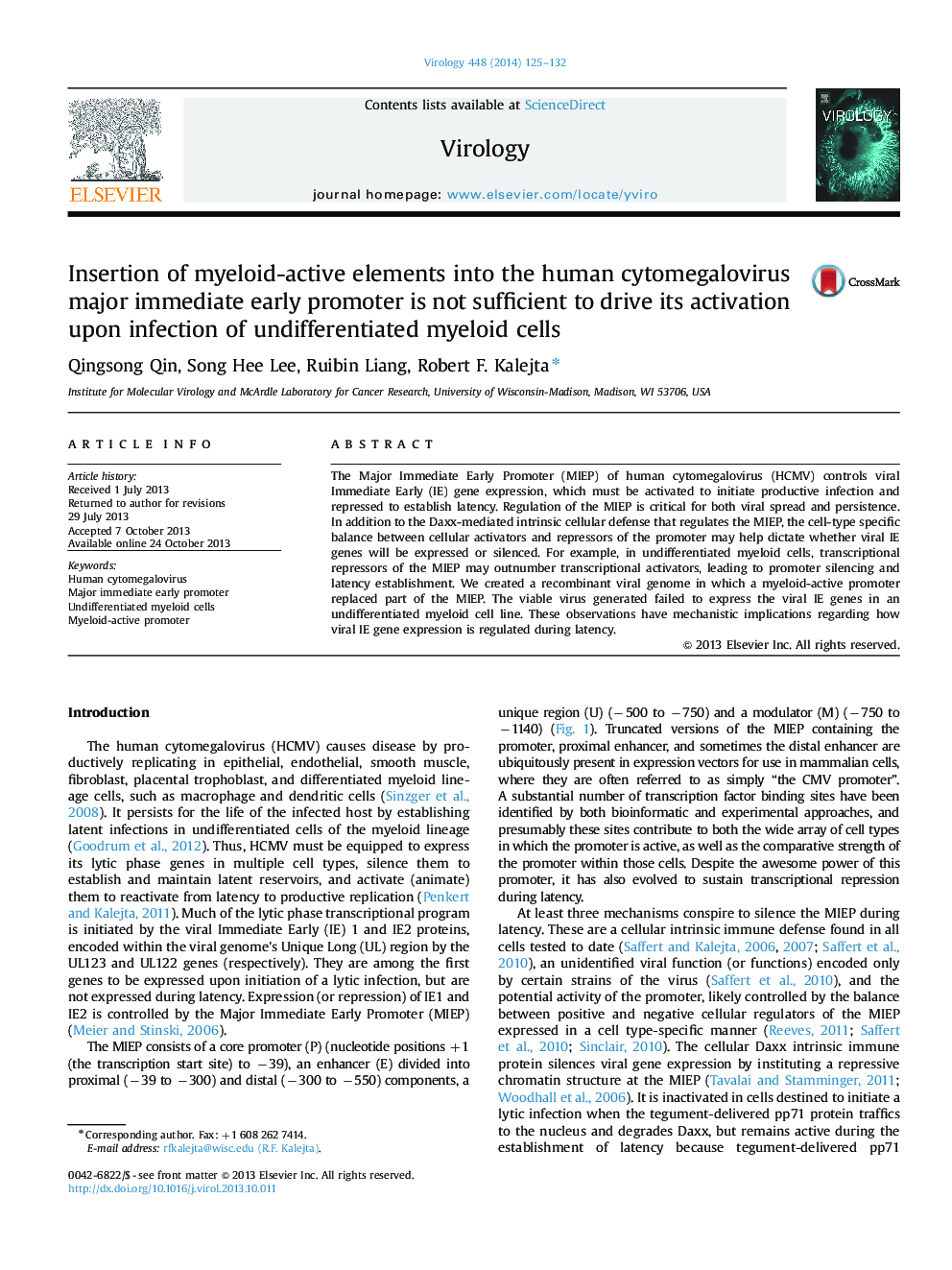| کد مقاله | کد نشریه | سال انتشار | مقاله انگلیسی | نسخه تمام متن |
|---|---|---|---|---|
| 6140740 | 1594255 | 2014 | 8 صفحه PDF | دانلود رایگان |
- Myeloid active promoter elements in context of HCMV genome repressed by THP-1 cells.
- Cellular intrinsic defense dominates virus silencing when HCMV establishes latency.
- Balance of MIEP activators and repressors may control maintenance or reactivation.
The Major Immediate Early Promoter (MIEP) of human cytomegalovirus (HCMV) controls viral Immediate Early (IE) gene expression, which must be activated to initiate productive infection and repressed to establish latency. Regulation of the MIEP is critical for both viral spread and persistence. In addition to the Daxx-mediated intrinsic cellular defense that regulates the MIEP, the cell-type specific balance between cellular activators and repressors of the promoter may help dictate whether viral IE genes will be expressed or silenced. For example, in undifferentiated myeloid cells, transcriptional repressors of the MIEP may outnumber transcriptional activators, leading to promoter silencing and latency establishment. We created a recombinant viral genome in which a myeloid-active promoter replaced part of the MIEP. The viable virus generated failed to express the viral IE genes in an undifferentiated myeloid cell line. These observations have mechanistic implications regarding how viral IE gene expression is regulated during latency.
Journal: Virology - Volume 448, 5 January 2014, Pages 125-132
